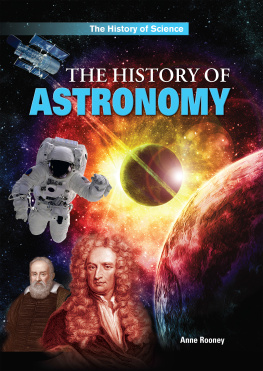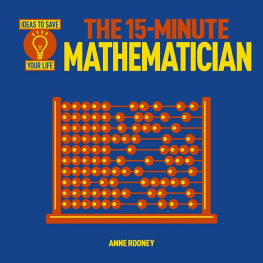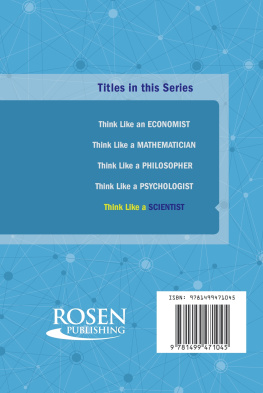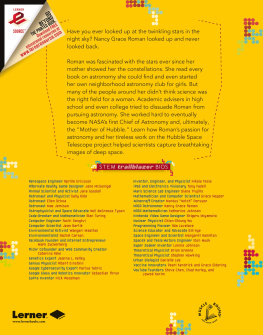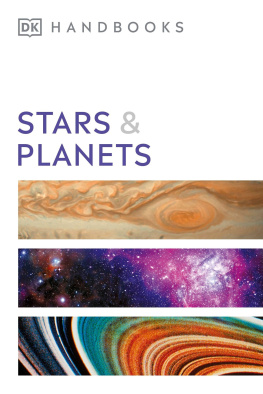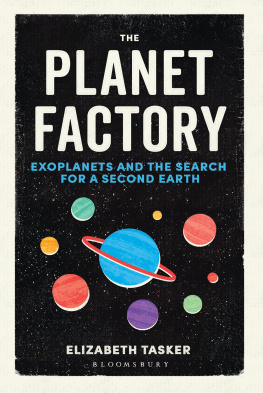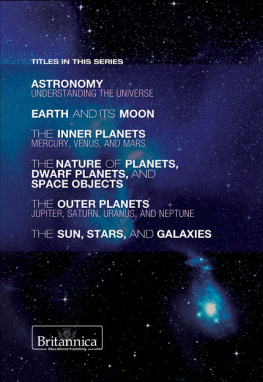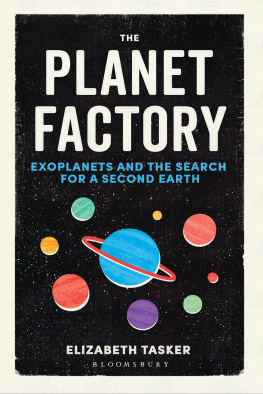- CHAPTER 1 THE FIRST ASTRONOMERS
From seeing to observing Space and time From prehistory to history Astronomy and astrology Counting the days Place and navigation And so to science - CHAPTER 2 THE GREAT SCHEME OF THINGS
Life, the universe, and everything Space for thought Our place in space The center of all things The Copernican revolution The threshold of the modern age - CHAPTER 3 TOOLS OF THE TRADE
Line of sight Modeling the celestial globe In the service of Allah A new way of looking Lines in the dark and the light Darkness visible Going there - CHAPTER 4 EARTH, MOON AND SUN
The Earth in space Our companion, the Moon The Sun - CHAPTER 5 THE SOLAR SYSTEM REVEALED
Exploring the planets How many planets? Visitors with a bad reputation - CHAPTER 6 MAPPING THE STARS
Tracking stars Fuzzy stars Galaxies disputed - CHAPTER 7 REMAKING THE UNIVERSE
Celestial mechanics The bigger picture Beginning and being The size of the universe The end of everything Other worlds, other universes - CHAPTER 8 THE FINAL FRONTIER
Asking Is there anybody there? Where is everybody? Somewhere to live


The Rosen Publishing Group, Inc.
29 East 21st Street New York, NY 10010
Additional end matter copyright 2018 by The Rosen Publishing Group, Inc.
All rights reserved. No part of this book may be reproduced in any form without permission in writing from the publisher, except by a reviewer.
Cataloging-in-Publication Data
Names: Rooney, Anne.
Title: The history of astronomy / Anne Rooney.
Description: New York : Rosen Publishing, 2018. | Series: The history of science | Includes bibliographical references and index. | Audience: Grades 7-12. Identifiers: LCCN ISBN 9781508177036 (library bound)
Subjects: LCSH: AstronomyJuvenile literature.
Classification: LCC QB46.R66 2018 | DDC 520dc23
Manufactured in the United States of America
Copyright Arcturus Holdings Ltd., 2018
CONTENTS
CHAPTER 1 THE FIRST ASTRONOMERS
From seeing to observing Space and time From prehistory to history Astronomy and astrology Counting the days Place and navigation And so to science
CHAPTER 2 THE GREAT SCHEME OF THINGS
Life, the universe, and everything Space for thought Our place in space The center of all things The Copernican revolution The threshold of the modern age
CHAPTER 3 TOOLS OF THE TRADE
Line of sight Modeling the celestial globe In the service of Allah A new way of looking Lines in the dark and the light Darkness visible Going there
CHAPTER 4 EARTH, MOON AND SUN
The Earth in space Our companion, the Moon The Sun
CHAPTER 5 THE SOLAR SYSTEM REVEALED
Exploring the planets How many planets? Visitors with a bad reputation
CHAPTER 6 MAPPING THE STARS
Tracking stars Fuzzy stars Galaxies disputed
CHAPTER 7 REMAKING THE UNIVERSE
Celestial mechanics The bigger picture Beginning and being The size of the universe The end of everything Other worlds, other universes
CHAPTER 8 THE FINAL FRONTIER
Asking Is there anybody there? Where is everybody? Somewhere to live
REACHING FOR THE STARS
The history of astronomy is a history of receding horizons.
Edwin Hubble, astrophysicist, 1936
Just 500 years ago, most people in the Western world believed that the Earth sat at the center of the universe with everything else revolving around it. They thought humans were created to be masters of this universe and that the heavens were unchanging for all eternity.
We now know that we are an evolved and evolving species, one among millions of plant and animal species living on a planet orbiting a fairly small star in an outpost of an unremarkable galaxy, somewhere in an unknowably vast universe. We know that there are countless billions of other stars and probably billions of other planets and that the history of the universe stretches billions of years into the past. Paradoxically, with greater knowledge has come greater recognition of the limits of our knowledge. We can account for and explain only a tiny proportion of all there is in the universe. We dont even know whether there is just one universe, or many universes.

The night sky reveals the stars that have captivated the human imagination for millennia.
The story of astronomy is one of emerging knowledge and emerging ignorance. It tells how we have come to know so much about the universe and our home in it, but shows that there is much more still to discover. It is a story that has barely begun, as we stand on the brink of space exploration.
From superstition to science
Our early ancestors attempted to explain what they saw in the heavens, often using mythology alongside their careful observations and measurements. With settled civilizations came written records and mathematics, allowing more detailed observations to be made and maintained over many years. Then, around 2,500 years ago, the Ancient Greeks started to explain the cosmos without recourse to mythology or the supernatural and so began the science of astronomy.
But the separation of astronomy from the supernatural did not come at a stroke. Astronomy only gradually moved from being the province of priests to the pursuit of scientists. For centuries, the observations and calculations of astronomers were directed towards religious and superstitious ends. They were used to fix the times for prayers and religious festivals, to predict conditions and events on Earth in the political or personal spheres, and to seek propitious times to implement plans. Astrology and astronomy remained inseparable for millennia. Even in the 16th and 17 th centuries, respectable astronomers often had a foot in the astrology camp. While they didnt all believe that there was any validity in astrology, they found it could be lucrative nonetheless.

The constellation Taurus, from a German astronomical globe of the 1530s.
The great divide
And then, over a period of only one hundred years, starting in 1543, astronomy and our astronomical knowledge changed beyond measure. First, two giant supernovas (exploding stars) appeared within 32 years of each other (in 1572 and 1604); none has been seen since. They demonstrated conclusively that the cosmos is not fixed and unchanging for all eternity. The old dogma had to shift to accommodate this development. Second, the invention of the telescope came just four years after the second supernova. It revealed there is far more in the night sky than we can see with our eyes alone. These events provided the vital evidence needed for a new theory of the universe to gain credence, one in which the sky is not fixed for all eternity and in which the Earth is not central. With the telescope to extend astronomers vision, the path was clear for the development of modern astronomy.
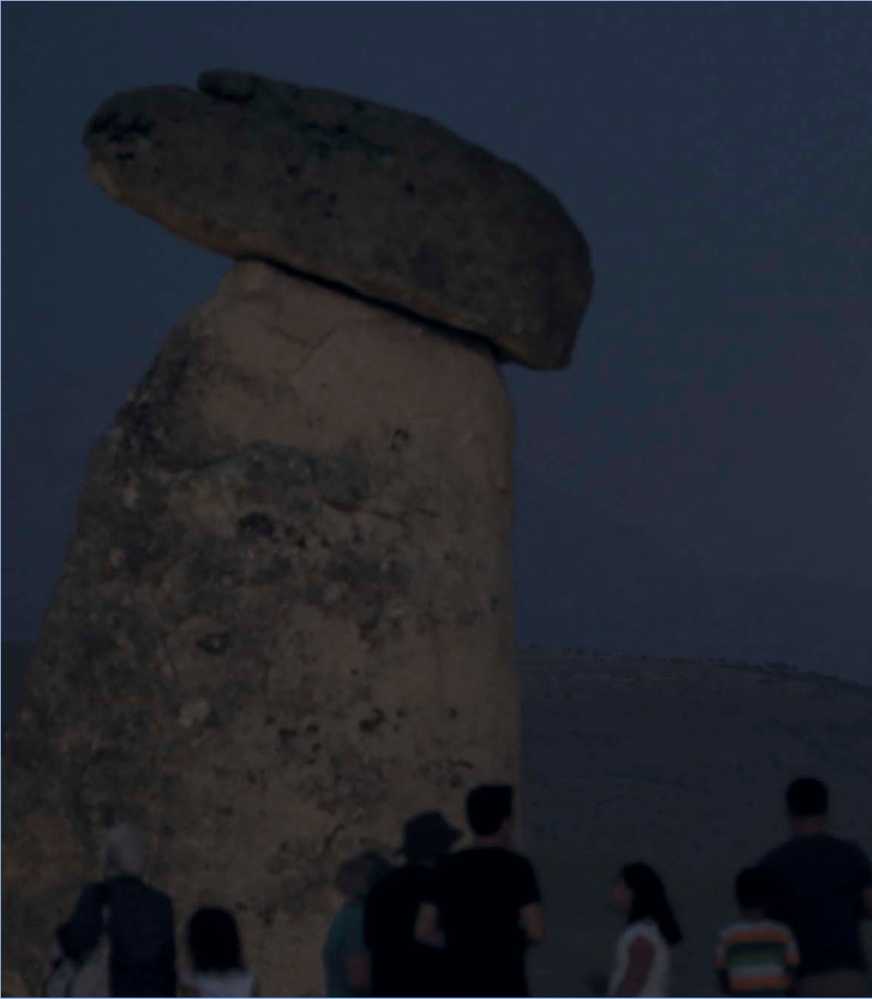
'The Moon has shone above the Earth with -the reflected light of the Sunfor four-and-a-half billion years.
CHAPTER 1
The first ASTRONOMERS
Astronomy compels the soul to look upwards and leads up from this world to another.

